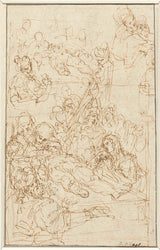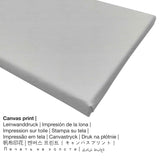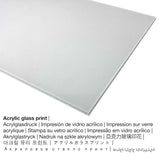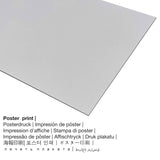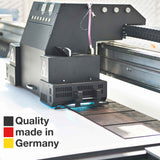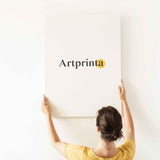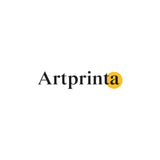Camillo Procaccini, 1561 - Ọmịiko - mbipụta nka mara mma
Ụtụ gụnyere. Mbupu gbakọrọ na ndenye ọpụpụ.
Onyinye ngwaahịa nka
The 16th century artwork was made by the male Italian artist Camillo Procaccini. Moveover, the piece of art belongs to the collection of Rijksmuseum na Amsterdam, Netherlands. Site n'ikike nke Rijksmuseum (ọha na eze).Ọzọkwa, ihe osise ahụ nwere akara kredit: . Ọzọkwa, itinye n'usoro mmepụta dijitalụ dị na eserese format and has a side ratio of 2 : 3, which implies that the length is 33% shorter than the width. Camillo Procaccini was a male painter from Italy, whose art style can mainly be classified as Mannerism. The Mannerist painter lived for a total of 79 afọ, born in the year 1550 in Bologna, Bologna province, Emilia-Romagna, Italy and deceased in the year 1629.
Họrọ nhọrọ ihe ebipụta nka
Anyị na-enye ụdị dị iche iche nha na ihe maka ngwaahịa ọ bụla. Họrọ n'ime nhọrọ ngwaahịa ndị a ugbu a ka ị kwekọọ na mmasị gị na nha na akụrụngwa:
- Akwụkwọ mmado ebipụtara (ihe kwaaji): A poster print is a UV printed flat canvas paper with a slightly rough surface texture, that resembles the actual masterpiece. Please keep in mind, that depending on the absolute size of the poster we add a white margin 2-6cm round about the work of art in order to facilitate the framing with your custom frame.
- Glass acrylic ebipụtara (nke nwere ezigbo mkpuchi iko n'elu): The print on acrylic glass, often named a UV print on plexiglass, will convert the original into brilliant décor. Your favorite artwork is manufactured with the help of modern UV print machines.
- Aluminom dibond mbipụta (ọla): An Aluminium Dibond print is a material with an impressive effect of depth. The bright parts of the original artwork shine with a silk gloss but without the glare. Colors are luminous in the highest definition, details are very clear, and you can truly feel a matte appearance of the product.
- Mbipụta kwaaji: The printed canvas material stretched on a wooden frame. It creates a plastic impression of three-dimensionality. The canvas print creates a cosy and comfy effect. Your canvas print of your favorite artwork will let you turn your fine art print into a large artwork like you know from galleries. Canvas prints are relatively low in weight. This means, it is quite simple to hang up your Canvas print without the use of extra wall-mounts. That is why, canvas prints are suitable for all kinds of walls.
Nkwupụta iwu: We try what we can to depict the art products as accurately as possible and to showcase them visually. At the same time, the colors of the print products and the imprint may vary marginally from the representation on your monitor. Depending on your settings of your screen and the condition of the surface, not all color pigments can be printed as realisitcally as the digital version shown here. Considering that all the fine art prints are printed and processed by hand, there might also be slight variations in the motif's exact position and the size.
Nkọwa ngwaahịa ahaziri ahazi
| Ụdị ngwaahịa: | mmepụta nka |
| Usoro mmeghari: | mmeputakwa n'ụdị dijitalụ |
| Usoro nhazi: | Mbipụta UV ozugbo |
| Mmalite ngwaahịa: | emepụtara na Germany |
| Stockdị ngwaahịa: | mmepụta ihe na-achọ |
| A na-atụ aro iji ngwaahịa eme ihe: | ụlọ mmepụta ihe nka, gallery mgbidi |
| Nhazi nka nka: | usoro eserese |
| Oke akụkụ onyonyo: | 2: 3 - ogologo: obosara |
| Oke akụkụ pụtara: | ogologo bụ 33% mkpụmkpụ karịa obosara |
| Ụdị ihe dị iche iche: | Mbipụta iko acrylic (nwere ezigbo mkpuchi iko), mbipụta ọla (aluminium dibond), mbipụta akwa akwa, mbipụta akwụkwọ mmado (akwụkwọ kwaaji) |
| Mbipụta kanvas (akwa akwa n'elu etiti ihe ndọtị) ụdị nha dị iche iche: | 20x30cm - 8x12", 40x60cm - 16x24", 60x90cm - 24x35", 80x120cm - 31x47", 100x150cm - 39x59" |
| Mpempe iko acrylic (nwere ezigbo mkpuchi iko) nha: | 20x30cm - 8x12", 40x60cm - 16x24", 60x90cm - 24x35", 80x120cm - 31x47" |
| Mbipụta akwụkwọ mmado (akwụkwọ kwaaji): | 40x60cm - 16x24", 60x90cm - 24x35", 80x120cm - 31x47" |
| Nhọrọ nha nha nke aluminom dibond (ihe aluminom): | 20x30cm - 8x12", 40x60cm - 16x24", 60x90cm - 24x35", 80x120cm - 31x47" |
| Igwe onyonyo: | na-enweghị etiti |
Ozi ndabere na ọrụ nka mbụ
| Aha nka: | "Pity" |
| Nhazi nka: | sere |
| Category: | nka ochie |
| Nhazi oge: | 16th narị afọ |
| Emepụtara n'afọ: | 1561 |
| Ogologo afọ nka nka: | karịa afọ 450 |
| Ụlọ ihe ngosi nka / mkpokọta: | Rijksmuseum |
| Ebe ngosi nka: | Amsterdam, Netherlands |
| Dị n'okpuru: | Rijksmuseum |
| Ụdị ikike nka: | ngalaba ọha |
| Site n'aka: | Rijksmuseum |
Tebụl metadata omenkà
| Aha onye nka: | Camillo Procaccini |
| Aha ndị ọzọ: | Camille Procacini, Procacini Camillo, Ca. Procaccini, Camillo Procaccino, C. Proccacini, Camelle Procaccini, Camillo Precanio, C. Procatsini, Camil. Procaccini, proccacini camillo, Camielo Precanio, C. Procacini, Camillo Proccacino, Cam. Procaccini, Procaccini Camillo, Camillo Precacchino, Portachin, Camillo Procazzini, C. Procaecini, C. Procaccini, procaccino camillo, Procaccini, Camillo Procaccini, Camillo Procarcino, Camillo Procaccino Milanese, Camille Procaccini, Camillo Procacino, Camille Procaccino, Camilla Proccacini, Camillo procasino, Camillo Procacini, Camillo Prochasino, Camillo Proccinio, Camilla Procacina |
| Gender: | nwoke |
| Nationality: | Italian |
| Ọrụ: | onye na-ese ihe |
| Mba onye si: | Italy |
| Otu nka: | nna ukwu ochie |
| Ụdị nke onye na-ese ihe: | Omume |
| Oge ndu: | 79 afọ |
| Afọ ọmụmụ: | 1550 |
| Obodo amụrụ: | Bologna, Bologna n'ógbè, Emilia-Romagna, Italy |
| Nwuru: | 1629 |
| Nwuru na (ebe): | Milan, obodo Milano, Lombardy, Italy |
© Nwebiisinka nke, Artprinta.com (Artprinta)

